The Super Nintendo Entertainment System introduced the world to masterpieces: A Link to the Past. Super Mario World. Donkey Kong Country. These games influenced popular culture and video game design for decades.
This article is not about these games.
Instead, we’re going to take a look at 19 games that, for some reason, slipped through the cultural cracks, becoming underrated gems and forgotten legends in their own right.
19 of the Most Underrated SNES Games of All Time
19. Boogerman
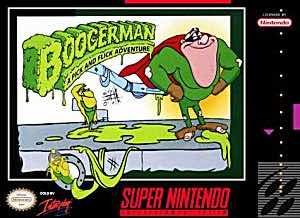
Coming in first on our list of underrated SNES games, Boogerman: A Pick and Flick Adventure, is a gross-out 2D side scroller with slime, burps, farts, and boogers galore. A platformer released in an era saturated with platformers, Boogerman hoped to use its gross-out nature to stand out from the crowd. Unfortunately, it got a little caught in its own snot, as the consensus was that Boogerman was not much more than a one-trick pony.
Still, its one trick was well executed, and Boogerman boasted 20 levels of snot-slinging adventure. The animation is solid for the era, and it came from the same studio that brought the world Earthworm Jim, so the core design is competent. Unfortunately, competent wasn’t enough to make a platformer stand out in the SNES days, and Boogerman sunk into obscurity.
18. Goof troop
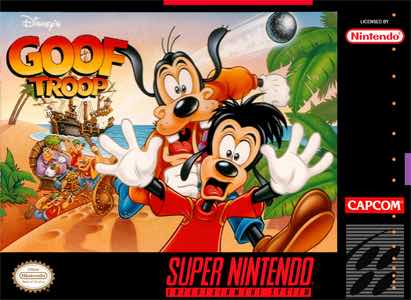
Based on the kids’ tv show, Goof Troop centers around a fishing trip gone awry, where Goofy and his teenage son, Max, have to rescue their friends, Pete and PJ.
The gameplay is heavily Legend of Zelda inspired, with top-down graphics, puzzles, item collecting, and enemy vanquishing. Common criticisms at the time were that it wasn’t terribly difficult, and the game is pretty short (there are only five levels), but the consensus is that the short, easy game is fun to play while it lasts. Incredibly, Goof Troop was designed by Shinji Mikami, who in 1996 would direct the hit: Resident Evil.
17. Earthworm Jim
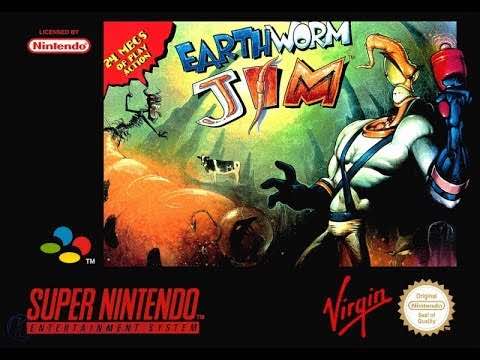
Less of an underrated SNES game, and more of an “I can’t believe this franchise fell by the wayside” game, Earthworm Jim was originally released for Sega Genesis before finding a home on the SNES. A run-and-gun side scroller about an earthworm in a power suit, Earthworm Jim boasted fluid graphics, cool attacks, and original environments to explore.
The gameplay never quite matched up to the graphics, unfortunately, but the popularity of the character was strong enough to bring about several sequels. Still, Earthworm Jim is a classic example of character at the expense of solid game development — as the creators were interested in making a franchise-able, merchandise-able character — first and foremost.
16. Wild Guns
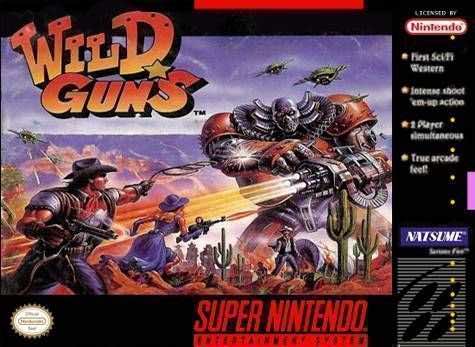
Wild Guns is what happens when you combine a Wild West shooting gallery with steampunk and sci-fi, and you give a three-person development team only five months to complete the game. Six levels, each with three stages, comprise the entirety of the game, making it on the shorter side.
At the time of release, the graphics were praised, while the difficulty was noted as being far too hard — even on easy. While this may have been a conscious decision to pad playtime for an otherwise short game, it had the added effect of elevating this shooter to a cult classic.
To top it all off, it had a co-op mode, and the ability to play as a man or a woman — not a common feature of the 16-bit era. Last released in 2018 for the Switch, Wild Guns remains an underrated gem that is finally accessible again for anyone up for a throwback challenge.
15. Harvest Moon
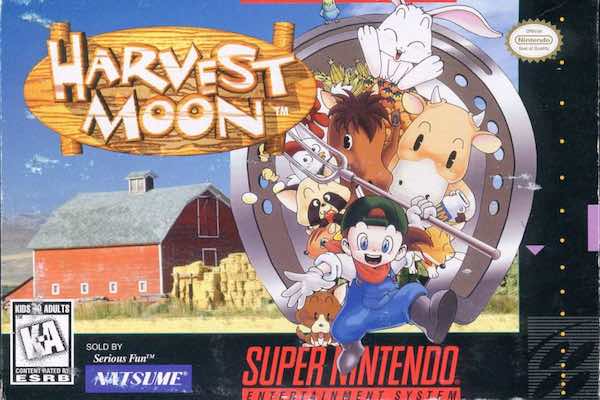
Released in 1996 in Japan as “Farm Story,” Harvest Moon landed stateside in 1997 at the end of the SNES’s life cycle. Harvest Moon for Super Nintendo is often overshadowed by later entries in the series — mainly due to it being a 16-bit game in the 64-bit era. Easily making it one of the most underrated SNES games.
Harvest Moon follows a young farmer who must maintain his newly inherited, crumbling farm. You can plant vegetables, raise livestock, forage, or build relationships with the locals in town — with the catch being you have a limited amount of time each day to allocate to each activity.
This time management system is what gives Harvest Moon its depth and difficulty, as you have many tasks to complete to ensure your plants and livestock don’t suffer. It seems simple on the surface, but once you start farming, you’ll quickly appreciate its complexity and addictive nature.
14. Jurassic Park
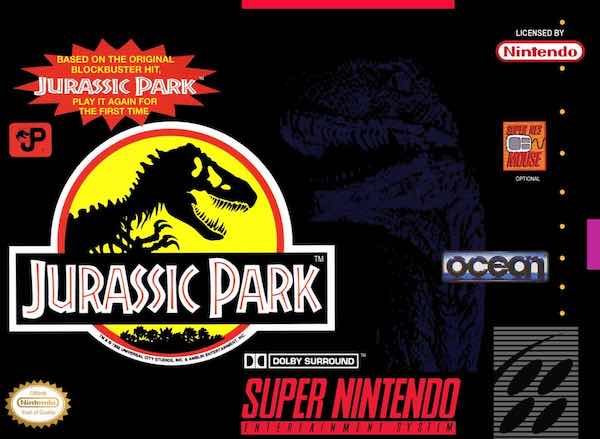
Tie in video game to the classic film, Jurassic Park has the player take control of Dr. Grant and engineer an escape from Jurassic park which has, spoiler alert, become overrun with wild Dinosaurs. The gameplay is split between top-down overworld mode, and interior FPS mode, where you have to hunt down raptors which are, incidentally, trying to hunt down you.
Throughout the game, you have to build upon successive tasks in order to eventually call a helicopter to fly you away to safety, and along the journey, you unlock progressively more powerful and useful weapons. The major downside is the game offers neither a save or a password system, so the entire game has to be beaten in one sitting, which can amount to over six hours. This, combined with a 5 life, 2 continue only feature, makes for a type of difficulty which is not rewarding or fair. The frustrating nature of the game discourages replay, which certainly contributed to its lack of legacy.
Still, the neat swapping between top-down and FPS makes this one of the more innovate tie-in games from the 16-bit era.
13. Lost Vikings
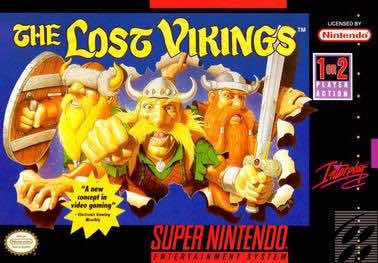
In this underrated SNES game, three Vikings are kidnapped by an evil alien named Tomator of the Croutonian Empire in order to be exhibited in his zoo. What follows is a platformer-puzzle to bust out of Tomator’s clutches and win their freedom. Unfortunately, as previously mentioned, the SNES was littered with platformers, and the bizarre story wasn’t enough to lift this game out of obscurity.
For those who played through, however, they were treated to a surprisingly deep puzzle-platformer where you could swap between the three different Vikings who each had specialized skills. These skills allowed the player to pass varying elements in each level — elements that would be impossible for the other dwarfs. This character cycling mechanic added a level of depth and complexity that puts this platformer on a higher technical level than some of our other, more basic entries.
12. Kirby’s Dream Course
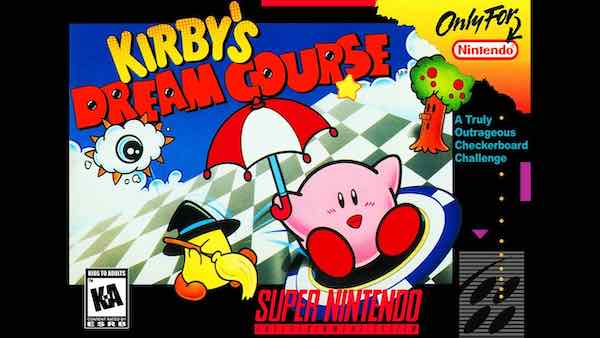
Kirby’s Dream Course is a golf game — where Kirby takes the place of the ball! It’s adorable. A departure from Kirby’s typical platforming shenanigans, Kirby’s Dream Course takes place over eight courses. The player must control the speed, spin, and angle of Kirby, in order to hit Kirby into enemies around the course. Kirby can then gain additional powers from defeated enemies, which Kirby must then use to complete each level. After the final enemy is defeated, the hole is revealed, and then Kirby must be hit in to clear the round.
The game also featured a two-player mode where the goal was to get to the hole before the other player. Reviews of the game were positive upon release, calling it “wildly amusing,” if saccharine.
False. There’s nothing too saccharine about Kirby.
11. Shadow Run
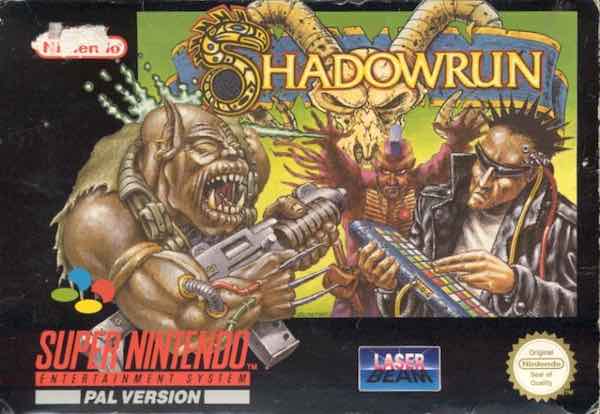
Shadow Run was a 16-bit adaptation of the table-top roleplaying game of the same name. It’s a cyberpunk RPG set in 2050s Seattle where the main character, Jake, wakes up in a morgue, back from the dead, with no memory. Jake then sets out to find out who ordered him murdered.
The gameplay is unique in that much of the plot and information is gleaned through conversations with NPCs. These conversations reveal keywords that can then be asked to different NPCs, which will reveal further information. Combat and interaction is done through a cursor, which is a bit jarring with a controller as opposed to a mouse.
The plot is a bit heady, mixing computer hacking, high fantasy, and corporate malevolence, but the unique, unraveling nature, combined with the point-and-click action, work together to create an uneven, but highly ambitious RPG.
10. Secret of Evermore
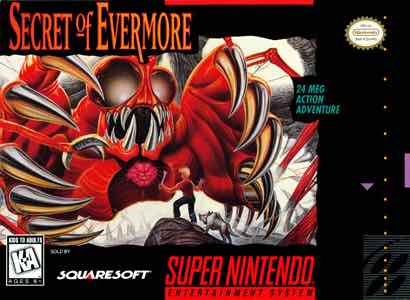
Notable on this list of underrated SNES games for being the only Square (or Square Enix) game developed exclusively by their North American team, Secret of Evermore is an action-adventure RPG with a distinctive Western Flair. You take control of a teenager from Podunk, USA, who travels through different realms across Evermore, a created fantasy world, in hopes of finding his way back home.
Along the way, you unearth a plot about a relatively mad scientist and his malevolent robotic butler, but this all dovetails back into the journey home.
Like it’s spiritual predecessor, Secret of Mana, Evermore is an action-RPG, which means the battles are in real-time. The innovative real-time battle mechanic from this series would become a template for many non-turn based RPGs in the coming decades. With an intuitive leveling system, difficult combat, a fun story, and immersive environments, Secret of Evermore was a tight RPG that never got the attention it deserved.
9. E.V.O.
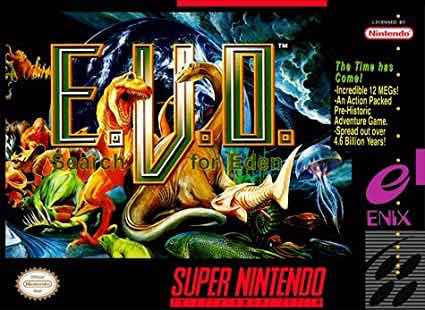
E.V.O.: Search for Eden was an ambitious side scroller that had a concept bigger than what the SNES could execute. The story takes place over several billion years, with the player taking control of a lifeform who has to defeat organisms in order to gain evolution points which allow the player to “evolve” or level up their life form. At the end of each of the five eras, the lifeform evolves through the dominant animals of the era, from fish to reptiles to mammals.
The story revolves around an organism, hoping to advance itself enough to enter the Garden of Eden and wed Gaia, the daughter of the Sun. Eventually, an evil single-celled being, Bolbox, challenges the player to a fight for dominance and the right to Gaia’s hand in marriage.
With a unique story and a deep evolution system, E.V.O. was a bit ahead of its time, as the graphics and gameplay were widely criticized on release. Still, its legacy has been felt in games throughout the decades, such as Spore by Maxis.
8. Plok
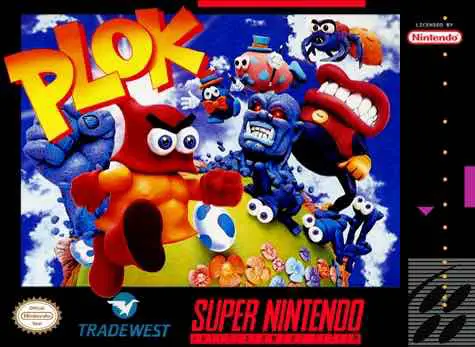
Yet another innovative platformer with an out-of-the-box main character, Plok centered around a cartoony guy named Plok who had the ability to shoot his limbs at enemies. The plot revolves around Plok trying to win back his stolen flag and then opens up into a larger plot to destroy an infestation of evil fleas all around his homeland. It’s an oddball story.
The gameplay, however, is tons of fun, with unique upgrades, secret levels, and warps, challenging boss fights, and even the ability to play as Plok’s deceased grandpappy (in black-and-white, no less).
The game was well-received, but never received a sequel, thus condemning Plok to obscurity. Twenty years later, however, the creators of Plok brought him back — as a webcomic! His adventures continue to this day under the title of Plok: The Exploding Man.
7. ActRaiser
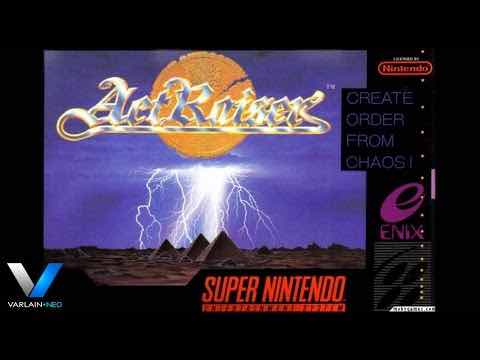
Definitely an underrated SNES gem, this is a unique hybrid of side-scrolling battle adventure combined with city building, all wrapped under an original plot where The Master (a stand-in for God) awakens from his slumber to combat evil and disbelief. Though the player never controls The Master directly, the player controls a statue during the sidescrolling sequence, and an angel in the world-building moments — both of which do The Master’s bidding.
The two-game modes complement each other, with the side-scrolling action unlocking features for your civilization and land for them to cultivate. Conversely, the city building levels work to level up your combat abilities. These two work in tandem to flesh out the plot of The Master working to help rescue his people from the clutches of Tanzra — the evil demon. It’s a surprisingly profound and philosophical game bundled into a quirky 16-bit hybrid adventure.
6. Super Mario All Stars
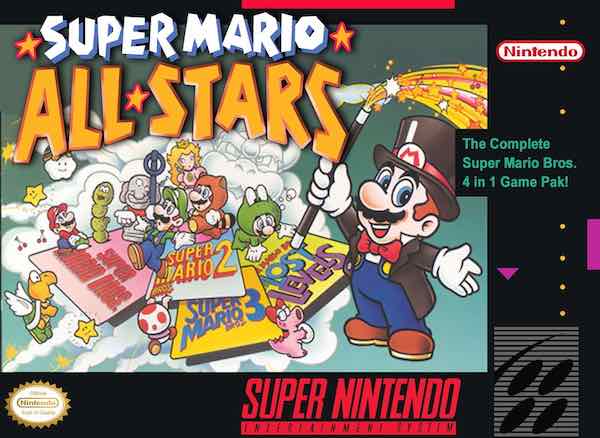
Super Mario All Stars is a 16 bit remaster of the first three Mario games originally released on the NES — along with a game never released in America, now called “The Lost Levels.”
The Lost Levels was the original Super Mario Bros. 2 in Japan. However, the game was deemed too difficult for American audiences, so a different, already released Japanese game, Doki Doki Panic, was retrofitted with Mario sprites. That game became the American Super Mario Bros 2, which is why the American Mario 2 has such a different play style.
The Lost Levels lives up to its reputation, being called notoriously difficult and even “unfair” upon release in North America. For gamers who could master its difficulty, The Lost Levels presented 32 levels across 8 worlds along with 5 bonus worlds with 4 levels each for a total of 52 brutal platforming levels for Mario to conquer.
5. Pilotwings
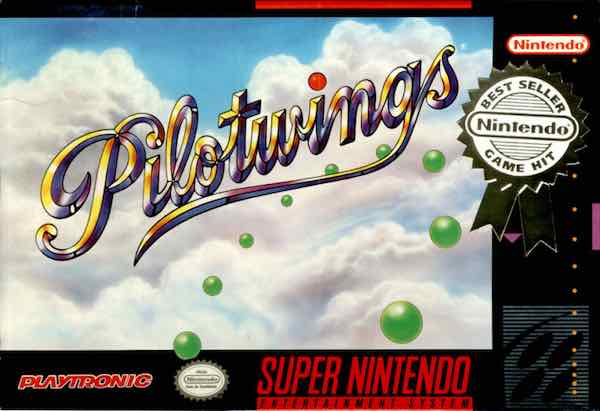
Pilotwings was a launch game for the Super Nintendo in 1991. A flight simulator that allowed a player to fly a plane, parachute, hang glide, and go on helicopter attack missions, the game was a technological breakthrough of its era. It used a development mode on the SNES called Mode 7, which rotated and scaled the backgrounds to create the illusion of 3-D graphics — something also seen in the original Mario Kart.
Pilotwings was well-received upon release, and its engaging and difficult missions made the replay value quite high. However, it fell off the radar (pardon the pun), as it only released two sequels, one in 1996 and another all the way in 2011. These far apart sequels never matched the caliber of the original, and the lengthy downtime between games created a serious headwind that the series could never overcome.
4. Super Mario RPG: Legend of the Seven Stars
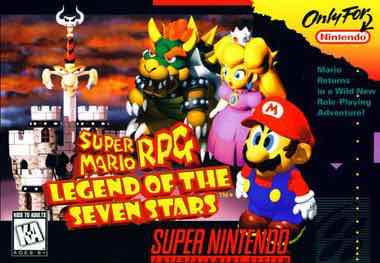
Super Mario RPG is less underrated in the library of SNES games, and more underrated in relation to other RPGs and, more importantly, other Mario Games. Often overlooked in favor of Paper Mario, Super Mario RPG was Mario’s first introduction to Role-Playing Games. The graphics were groundbreaking at the time, allowing for a form of 3-D resolution in a very 2-D era. The game was a mix of light platforming and turn-based battles — basically a mix of Mario and Final Fantasy.
The game was a massive success, selling millions of copies and paving the way for Paper Mario — which eventually eclipsed Super Mario RPG, causing this Super Nintendo game to fall a little by the wayside. It is absolutely worth a play, however, for its groundbreaking graphics, and legacy-building gameplay.
3. Final Fantasy VI
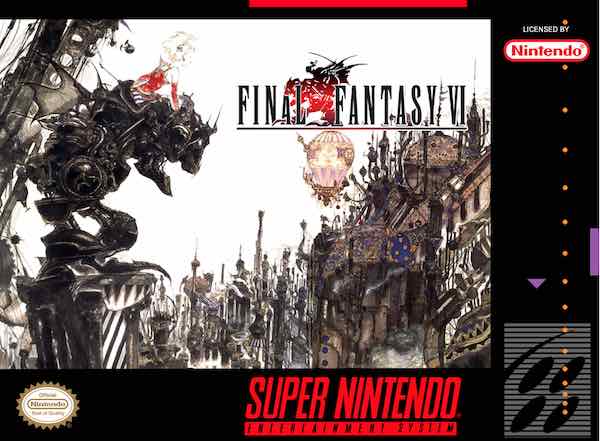
Final Fantasy VI may be one of the greatest video games ever created, and yet it is still and underrated SNES game. Like Super Mario RPG, it is less so that it is underrated among SNES games, and more so that it is underrated and underappreciated in relation to the rest of the Final Fantasy canon, specifically FFVII.
The last 16-bit Final Fantasy, and the last released by Nintendo for quite some time, FFVI, released in North America as FFIII, boasts the largest playable cast of any Final Fantasy game to this day. It wove a compelling tale of a young, magically blessed woman named Terra who was rescued by a resistance group from the clutches of a Nazi-inspired Empire.
The game had dozens of hours of plot, dungeons, boss fights, and missions. The combat system was based around the traditional turn-based RPG mechanic that the Final Fantasy series itself popularized, with each character having specialized attacks they could execute. Additionally, all characters could learn a variety of magic spells through level grinding while holding magic stones — a mechanic that balanced out the specialization.
The sprawling plot and evolving overworld were daunting, yet engrossing, with the story daring to hit darker themes that Nintendo usually shied away from, such as unwed pregnancy and suicide.
The jump to 3-D graphics in the next game, Final Fantasy VII, caused VI to be a little overlooked, as VII is remembered as the game that ushered Final Fantasy into the 3-D era. VI, however, is seen as the last and best of an older breed of RPG, which somehow managed to cram in an absolute epic into only a few megabytes.
2. Zombies Ate My Neighbors
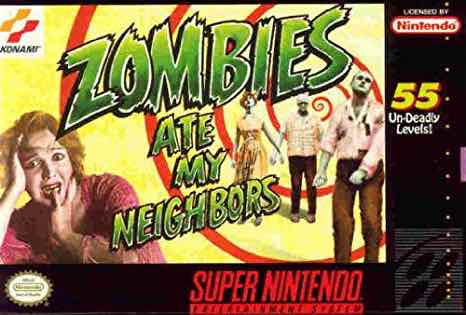
An absolute, madcap underrated SNES gaming pleasure, Zombies Ate My Neighbors is a shoot-em-up, top-down 2D homage to old-school horror. The plot is spelled out in the title: Zombies have invaded the neighborhood, and it’s up to you to stop them. At first, only armed with a water gun, you quickly gain new weapons and items on your quest to rescue your neighbors from the zombie clutches.
Zombies also came with a great co-op mode, with a boy and a girl character to choose from — again, a rarity at the time. It used a password system in place of a save feature, however, that in 2019 can feel both frustrating and cheat-like. Still, Zombies Ate My Neighbors is reams of fun. Though Zombies roam all over, you never feel outmatched, as you pick up items like a weed whacker or a bazooka to mow down the monsters.
1. Illusion of Gaia
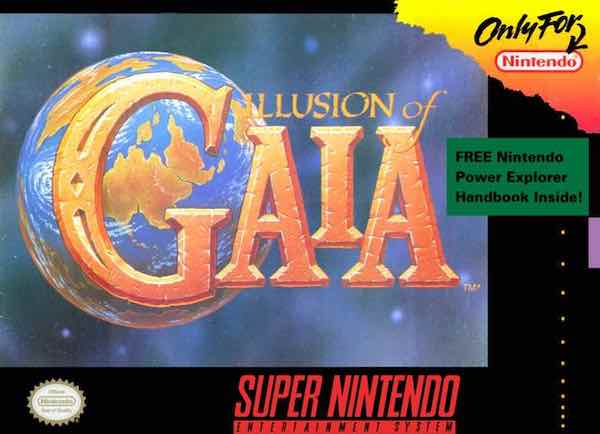
Simple. Enchanting. Bittersweet. Illusion of Gaia wove together a profoundly mature plot under the guise of another simple coming-of-age RPG. Gaia somehow fused adventure with RPG while simultaneously embracing minimalist mechanics, shying away from a complicated leveling system in favor of a lighter approach that increased health and power as enemies were defeated. This makes Illusion of Gala our most Underrated SNES Game of all time.
You play as Will, a young boy whose father went missing looking for the Tower of Babel. Nearly immediately, Will discovers his ability to take the form of magical warriors, and he sets out with his friends to rescue the world from evil. Though this may seem stereotypical of the genre, Illusion of Gaia defies stereotype by digging into the relationships between our main characters, as well as the tragedies Will fights to rectify. This game doesn’t shy away from loss, death, or the inexorable march of time, but rather Gaia embraces it.
Illusion of Gaia is a fascinating game that is easy to pick up and simple at the outset, but rewards the player with a progressively powerful story that reaches its pinnacle at the Tower of Babel, where our heroes go into battle to save humanity, knowing full well their sacrifice will never be known by the Earth below. Their sadness is immense, yet still, they decide to continue, in hopes that their sacrifice will not be in vain.
Fittingly, Illusion of Gaia has fallen into obscurity, victim of the march of time. Fight back, and pick up a copy. Play through Will and Kara’s adventure. Let them know that they aren’t forgotten. Remember them.
If you enjoyed this post, check out our 10 Of The Best SNES Games Ever Crafted.

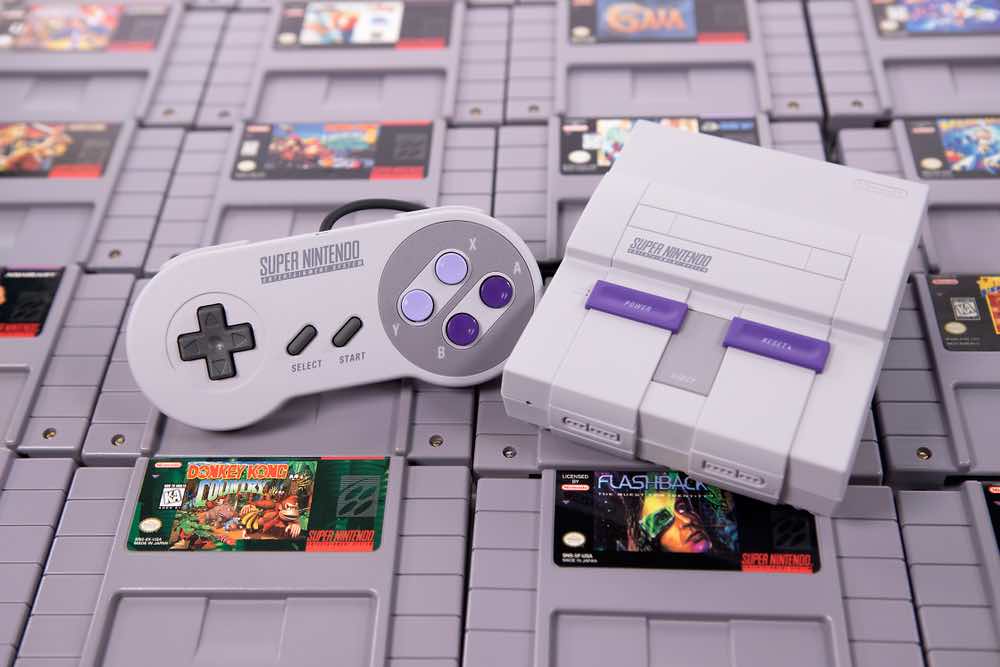
What a terrible list, many of these games are well known and favorites to many.
I expected The 7th Saga wouldn’t be on here, That game is VERY well-made, but it’s SO underrated, it got to the point where it’s existence is hanging by a FIBER-WIRE.